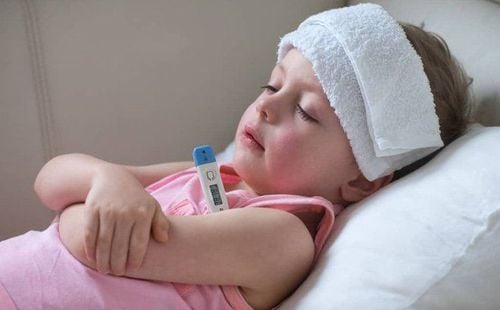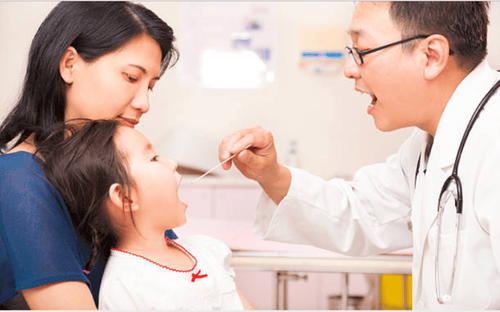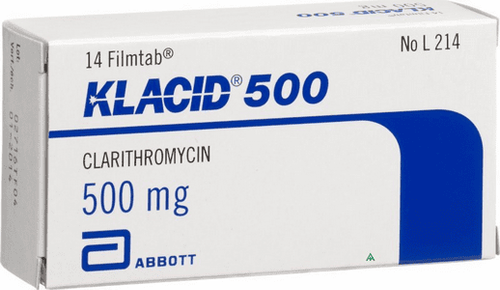This is an automatically translated article.
The article was professionally consulted by Specialist Doctor II Le Thanh Cam - Department of Pediatrics - Neonatology - Vinmec Danang International General Hospital. Uncle has 15 years of experience in diagnosis & treatment of pediatric diseases; She used to work at the Pediatric Department - Da Nang Hospital and Da Nang Center for Obstetrics and Gynecology. Her strength is diagnosis and treatment of pediatric diseases; resuscitation, pediatric emergency.
Vietnam is a humid tropical monsoon country, the weather changes erratically, making children susceptible to upper respiratory tract infections. Children with upper respiratory infections often have symptoms of fever, cough and vomiting.
1. What is upper respiratory tract infection?
Upper respiratory tract infection is a combination of diseases including: cold, nasopharyngitis, pharyngitis, sinusitis, laryngitis... with symptoms such as fever, runny nose, cough and difficulty breathing.
When children have signs of upper respiratory tract infection, parents should give the child enough nutrition, add a lot of fruit juice and wash the nose with physiological saline to open the airway. If your child has symptoms of fever, cough and vomiting, then take them to the hospital immediately for diagnosis and timely treatment methods.
Trắc nghiệm: Nhận biết sớm dấu hiệu chậm phát triển thể chất và trí tuệ ở trẻ
Nếu 6 tuổi không biết đếm số, 7 tuổi vẫn chưa phân biệt được giữa thực tế và tưởng tượng thì có thể bé chậm phát triển thể chất và trí tuệ hơn so với bạn bè cùng lứa. Bạn đã nhận biết được các dấu hiệu bất thường sớm này chưa? Cùng làm nhanh bài trắc nghiệm sau để trang bị thêm kiến thức cho mình nhé!
The following content is prepared under supervision of Thạc sĩ, Bác sĩ y khoa, Ma Văn Thấm , Nhi , Phòng khám Đa khoa Quốc tế Vinmec Dương Đông(Phú Quốc)
>> See more: Upper respiratory tract infection in children and how to avoid illness in the cold season - Article written by Doctor Le Tuyet Nga - Specialist I - Pediatric Center - Vinmec International General Hospital Times City
2. Guidelines for taking care of children with upper respiratory tract infections
2.1 Children with runny nose, stuffy nose One of the signs that a child has an upper respiratory infection is that the child will have a runny, stuffy nose. The characteristics of the above sign are abundant, clear, dilute, pus-free and no foul odor. It is possible that the baby will have a cough, a severe cough or a dry cough, a cough with sputum. When the child has respiratory symptoms, the mother should clear the mucus in the nose with 0.9% isotonic physiological saline to help When washing the baby's nose, the mother should put the baby lying on his side, mouth open, one hand holding the baby's head slightly, the other hand takes a small bottle of physiological saline and sprays it on one side of the nose to let the saline water flow. the other nostril. Before washing your child's nose, you should also wash your hands with antibacterial soap to ensure that the bacteria do not spread back. Nasal suction and washing tools should also be sterilized. After cleaning the baby's nose with physiological saline, the mother should use a clean, dry cotton swab to clean it again, absolutely do not use the mouth to suck the nose for the child, this is easy. transmit more bacteria to the child. Mothers should avoid abusing salt water to suck the nose a lot because it will cause atrophy of the child's nasal mucosa or do not drip garlic juice according to folklore or oral tradition because garlic can easily burn the child's mucous membranes.

Besides, to protect the respiratory tract for children, we should keep the child's body warm in winter, and in summer, do not need to wear too thick clothes, keep the room temperature > 25 degrees Celsius, just avoid the wind drive.
2.2 The child has a fever and cough accompanied by vomiting and regurgitation When having an upper respiratory infection, the child will have fever symptoms. Besides the phenomenon of high fever, fever in waves up to 39 degrees Celsius, the baby will have a cough, make the child lose sleep, vomit. Cough in upper respiratory tract infections is mostly caused by increased secretion of sputum. In this case, you can give the child an herbal expectorant.
For children with high fever, parents can bring down the child's fever by: taking off all clothes, using a cotton towel dipped in warm water to wipe the forehead, abdomen, armpits and groin area. If the child still has no fever, then take the child to a medical facility to be diagnosed and take fever-reducing medicine as prescribed by the doctor.

According to medical experts, in the case of children with mild illness and no complications, parents can give their children a normal diet, increasing green vegetables and fruit juices. Parents, please pay attention to monitor the temperature every 30 minutes, give the baby increased breastfeeding to rehydrate. Children should be dressed in loose, comfortable clothing and avoid tight clothing.
When children have symptoms of vomiting, regurgitation, parents should clean the vomit in the mouth, throat, nose and wipe the child. At this time, the mother can feed the baby less but divide it into several feedings to avoid overeating. Many parents, when they see their baby vomiting, buy medicine on their own, making the child's health condition even more serious. In case, the child vomits a lot with signs of dehydration such as: sunken eyes, wrinkled skin ... more lethargic children need to go to the doctor immediately.
2.3 Child with difficulty breathing Shortness of breath is an uncommon symptom of an upper respiratory infection, but having difficulty breathing means the illness is getting worse. If parents are subjective and do not promptly treat the child's disease, it will turn to chronic upper respiratory tract infection. When chronic upper respiratory tract infection will have symptoms: cough, sore throat, swallowing, feeling stuck in the throat, stuffy nose due to the phenomenon of hypertrophy of the nasal peduncle.
Some children have frequent runny nose in one or both nostrils. Some children with long-lasting chronic VA, whose cause is bacilli, the mucus discharge from the nose is often green, in case of sinusitis, it is accompanied by headache symptoms.
With children, all diseases, whether severe or mild, cannot be subjective, because children are susceptible to dangerous complications, especially respiratory infections. Therefore, when your baby has the above symptoms, parents should consult a doctor to have appropriate care for the child.
In addition, in order to prevent upper respiratory tract infections in children, parents should pay attention to nutrition to improve the child's resistance. At the same time, add supporting foods containing lysine, essential micro-minerals and vitamins such as zinc, chromium, selenium, B vitamins,... snacks and less digestive problems.
Parents can learn more:
Why do you need to supplement Lysine for your baby?
The role of zinc - Guidelines for reasonable zinc supplementation
Please visit the website Vinmec.com regularly and update useful information to take care of your baby and family.















